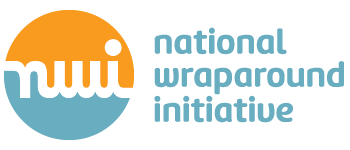The Wraparound Evaluation and Research Team (WERT) is the "accountability wing" of the National Wraparound Initiative (NWI) and a partner in the National Wraparound Implementation Center (NWIC). Through collaboration with NWI advisors, WERT develops and disseminates evaluation measures that support Wraparound implementation such as those of the Wraparound Fidelity Assessment System.
The WFAS is a multi-method approach to assessing the quality and fidelity of the Wraparound process. WFAS instruments include surveys of multiple stakeholders, a team observation measure, a document review measure, and an instrument to assess the level of community and system support for Wraparound. The instruments that comprise the WFAS can be used individually or in any combination. These measures are also supported by an online data entry and reporting system that can produce customized reports for user sites.
The WFAS is a multi-method approach to assessing the quality of individualized care planning and coordination for children and youth with complex needs and their families. WFAS instruments include interviews with multiple stakeholders, a team observation measure, a document review measure, and an instrument to assess the level of community and system support for Wraparound. The instruments that comprise the WFAS can be used individually or in combination with one another. These measures are also supported by an online data entry and reporting system that can produce customized reports for user sites.
Below, we provide a brief overview of the measures of the WFAS. For more information about the measures of the WFAS, please visit the website of the Wraparound Evaluation and Research Team (WERT), at the University of Washington.
WFAS measures include:
-
Wraparound Fidelity Index, Brief Version (WFI-EZ)
The WFI-EZ is a self-report survey for up to four types of respondents: parents or caregivers, youths 11 years of age or older, Wraparound facilitators, and team members. The survey can be self-administered or administered by a program staff member. It can be completed via online survey or by hand on a piece of paper. The survey takes about 10 minutes to complete, and collects information about Wraparound implementation fidelity (25 items), as well as caregiver and youth satisfaction (4 items), and youth and family outcomes (9 items).
-
Team Observation Measure, Version 2.0
The Team Observation Measure (TOM) is employed by external evaluators to assess adherence to standards of high-quality Wraparound during team meeting sessions. The newest version of the TOM (the TOM 2.0) contains 36 items organized around seven domains, such as Effective Teamwork, and the Use of Natural and Community Supports. Each item represents a single indicator of quality practice. Working alone or in pairs, trained raters indicate whether or not each indicator was in evidence during the Wraparound team meeting session. These ratings are translated into scores for each domain as well as a total fidelity score for the session overall.
-
Document Assessment and Review Tool
The Document Assessment and Review Tool (DART) is a fidelity measure that relies on documentation to tell the story of a family’s experience with Wraparound. Trained reviewers use plans of care, referral forms, incident reports, crisis plans, and other documentation to score 51 items across 10 domains. Unlike other tools, the DART is able to evaluate the practice over time, from referral to discharge, with a focus on if, and how, things change over time.
-
Community Supports for Wraparound Inventory
The CSWI is a research and quality improvement tool intended to measure how well a local system supports the implementation of the Wraparound process. The CSWI is completed online by carefully selected key informants in the community, and findings from the assessment provide a quantitative profile of community supports for Wraparound across multiple domains. Communities can use these results to pinpoint areas of strength and challenge, and they can reassess periodically to monitor improvements over time.
It results in a quantified assessment of community supports for Wraparound across multiple domains, so that researchers can determine the impact of these conditions on fidelity and outcomes. Results are structured so that local groups can assess system supports for Wraparound, respond to areas of strength and weakness, and monitor improvements over time.
-
Wraparound Structured Assessment and Review (WrapSTAR)
The Wraparound Structured Assessment and Review (WrapSTAR) provides an external, objective method for evaluating a site or system’s Wraparound implementation strengths and needs, allowing for a comprehensive approach to accountability and quality improvement across all implementation drivers for Wraparound. Bringing together a range of WFAS tools and implementation measures, the WrapSTAR process goes above merely measuring a site’s adherence to the Wraparound model (aka, “fidelity”) to also assess key implementation drivers rooted in years of implementation science research, as well as community and system supports found to be essential for sustaining a Wraparound Initiative. This holistic approach allows for a robust understanding of not only how, but why Wraparound is functioning within an organization or community, leading to greater insight about what can be done to improve outcomes for families and staff, and the degree to which locally sustainable infrastructure for workforce development and implementation has successfully yielded high-quality practice.
For more information about the measures of the WFAS, please visit the website of the Wraparound Evaluation and Research Team (WERT), at the University of Washington.
The Community Supports for Wraparound Inventory was produced through the full NWI consensus process. Other products referenced here have been peer reviewed through the NWI. See our Resource Review Standards for more information.

